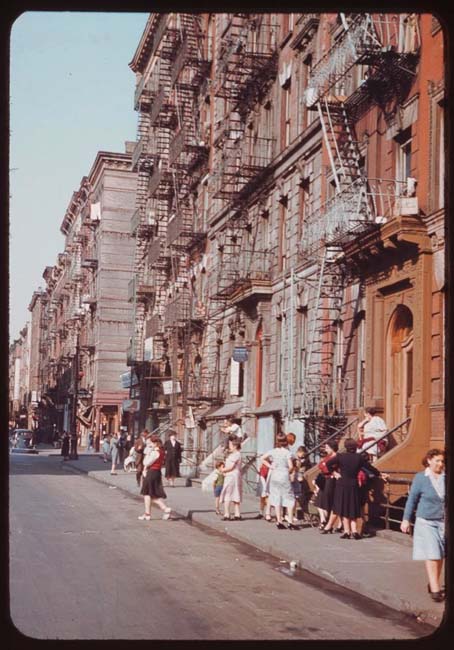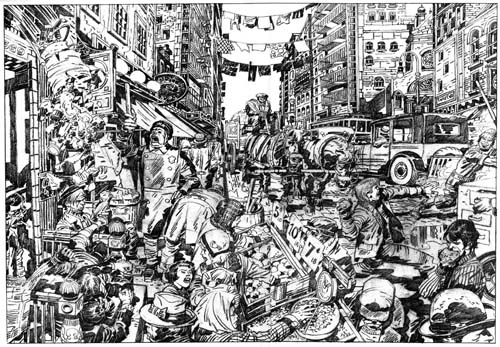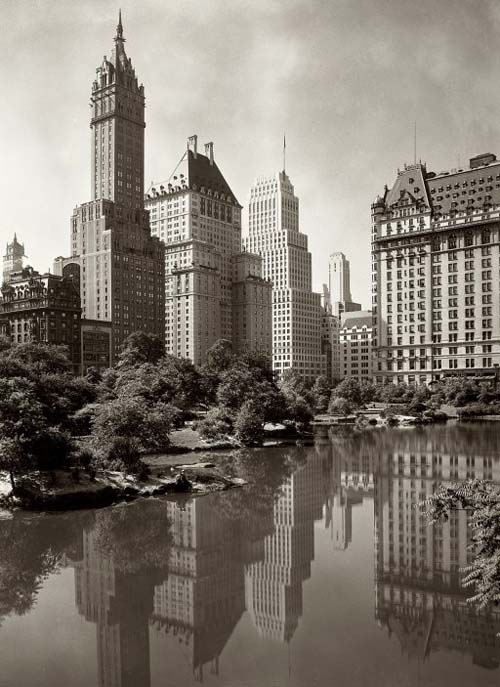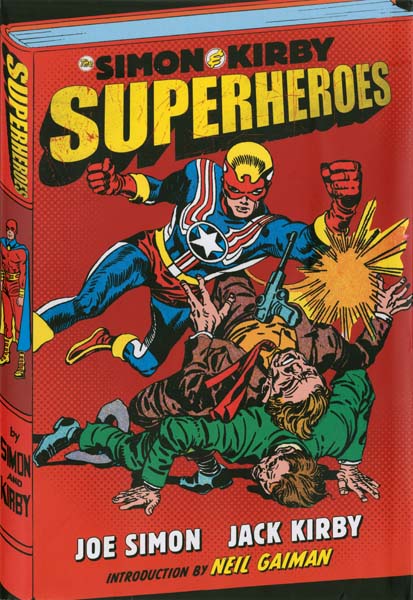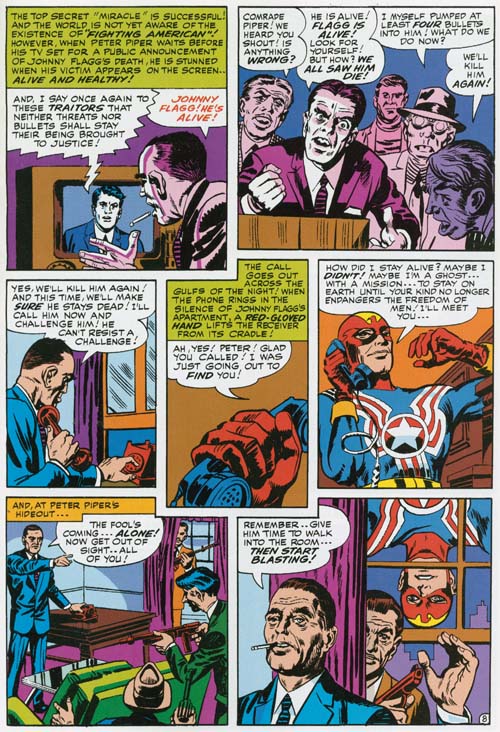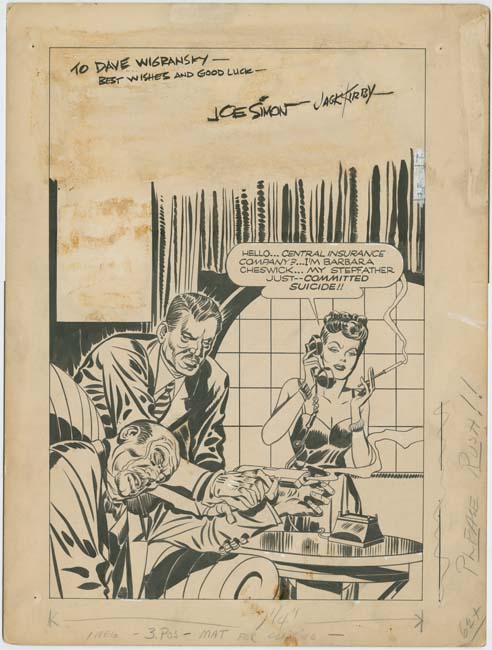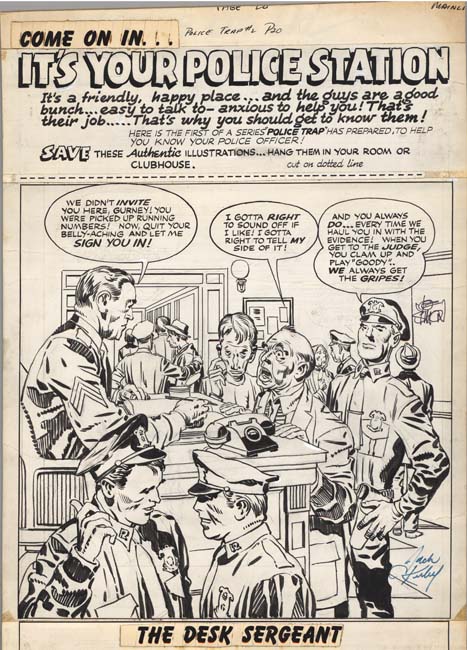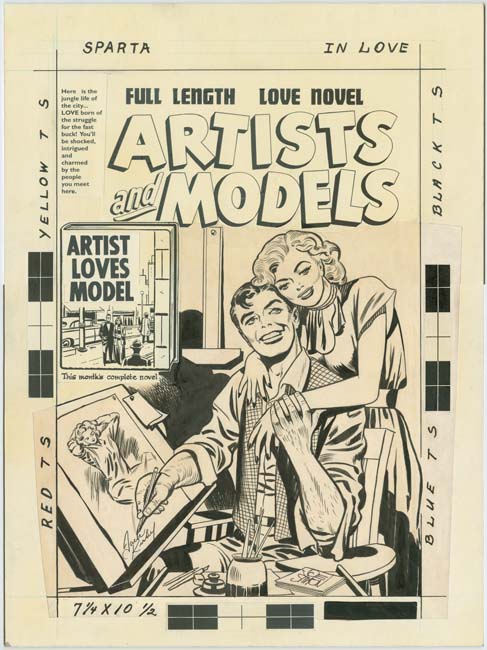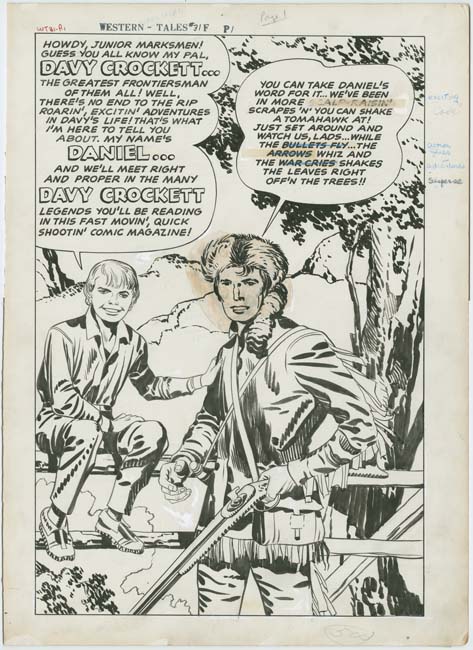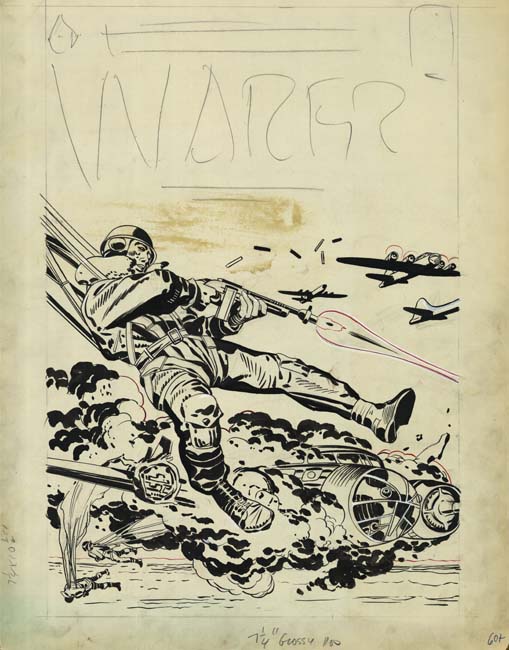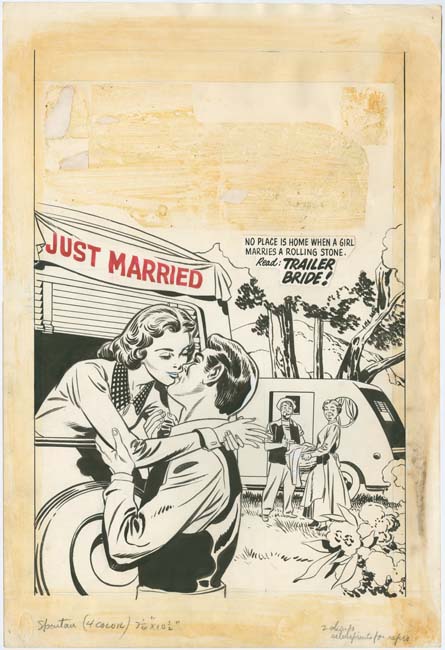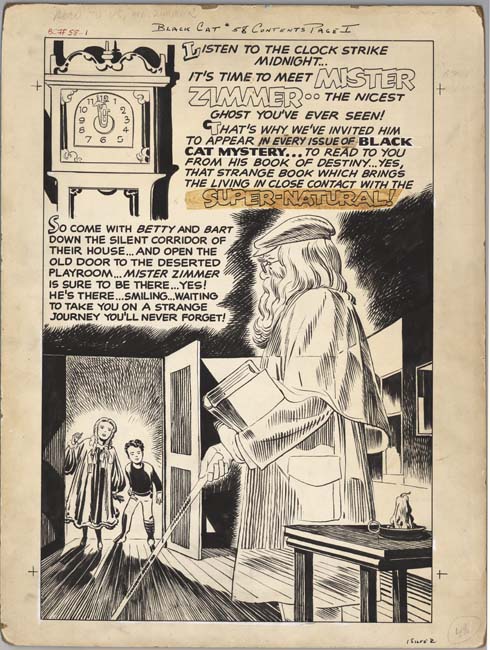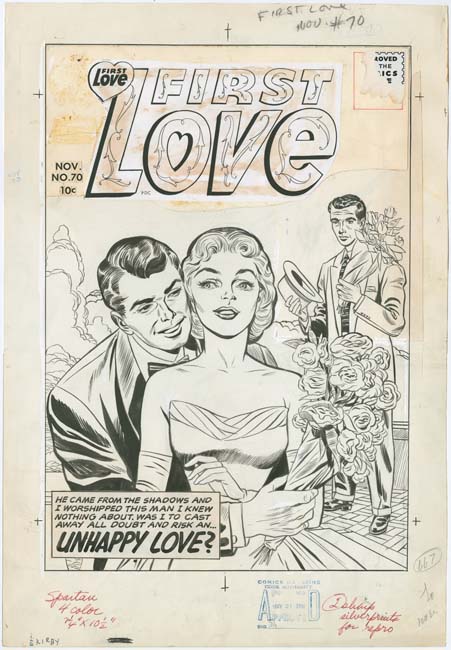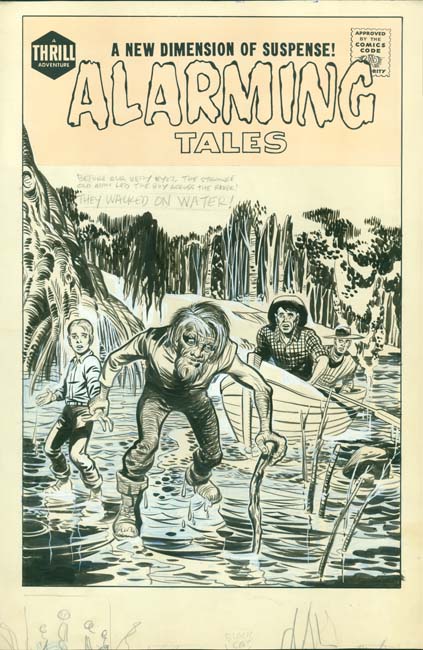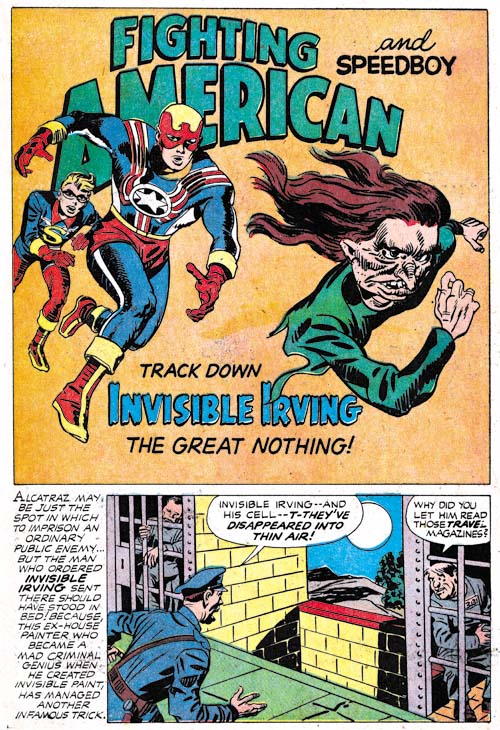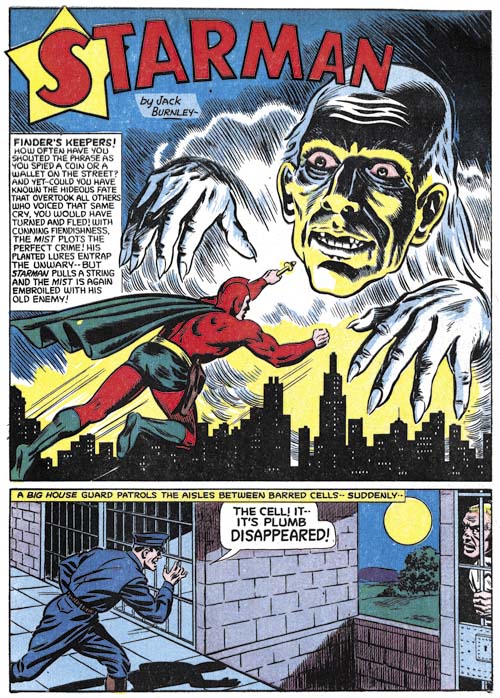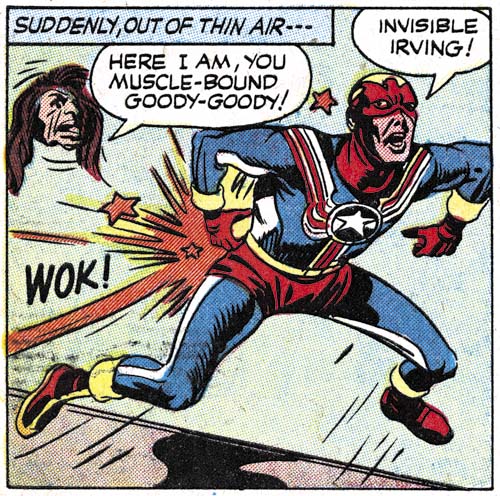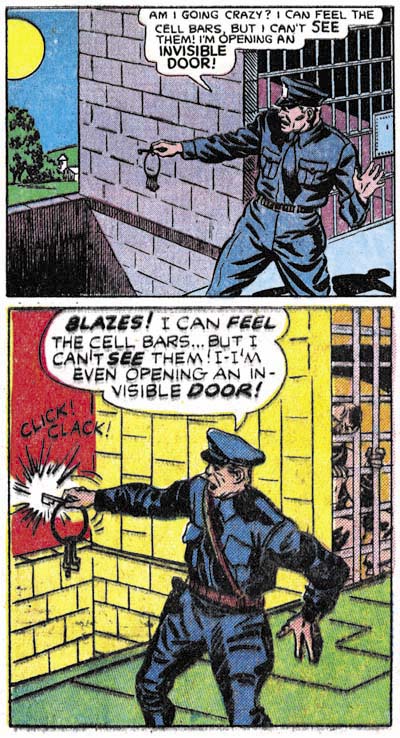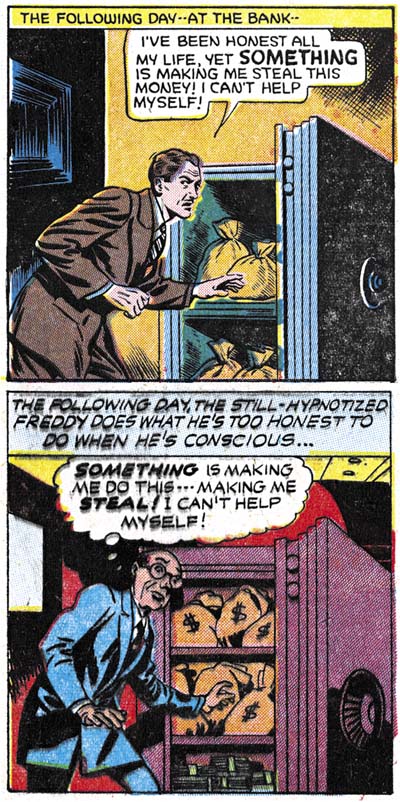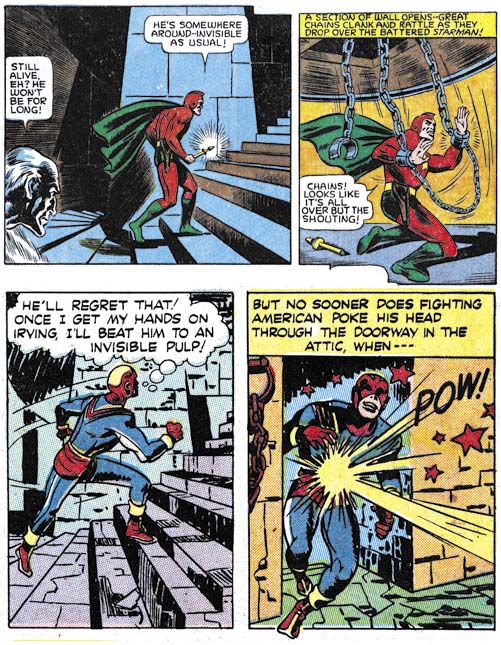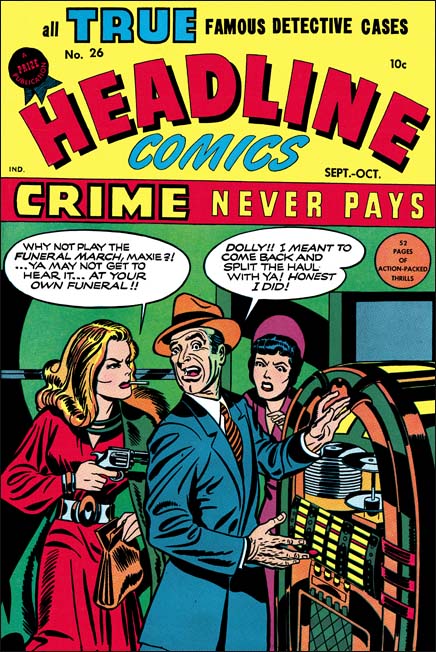
Headline #26 (September 1947), art by Jack Kirby
Simon and Kirby only worked in the crime genre during two periods. The first, and most extensive one, was from 1947 to about 1950 when the worked on Clue and Real Clue Comics for Hillman, as well as producing Headline and Justice Traps the Guilty for Prize. The second occasion was when they produced Police Trap for the own publishing company Mainline. Joe and Jack were always very creative and the crime genre gave them a wide range of subjects. They produced stories about gangsters, western outlaws, and other historical criminals. Another variation Simon and Kirby seemed fond of were women criminals. By no means were Joe and Jack the sole comic book creators that did work about crime by females (there even was a title Crimes By Women published by Fox). However like pretty much everything Simon and Kirby did, they created some very memorable work about women criminals.
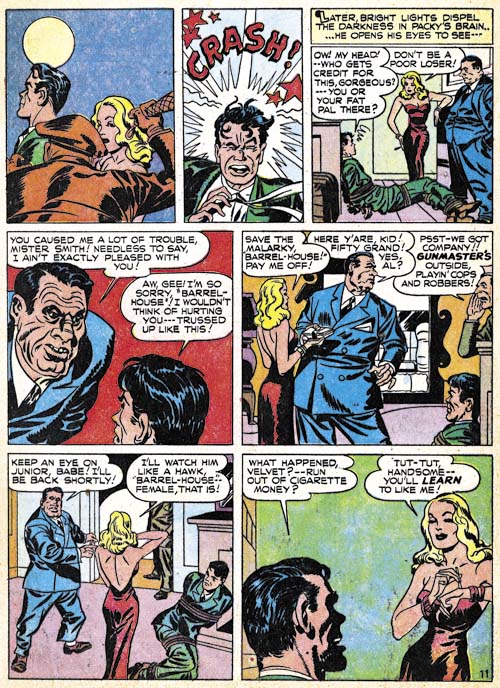
Clue Comics volume 2, number 3 (May 1947) “The Battle For Packy Smith” page 11, pencils by Jack Kirby
The first of Simon and Kirby’s beautiful villains was Velvet. She appeared in the second story about Packy Smith, a gentlemen highly sought after for the element X contained in his body. Packy was much very taken with the charming Velvet Silver, only to end up betrayed by her for the bounty that a crime lord had placed on his head. But once she was paid for her efforts, Velvet then proceeded to betray in turn the crime lord and freed Packy. Velvet may have been larcenous but she also had a heart of gold. A villain you cannot help but love.
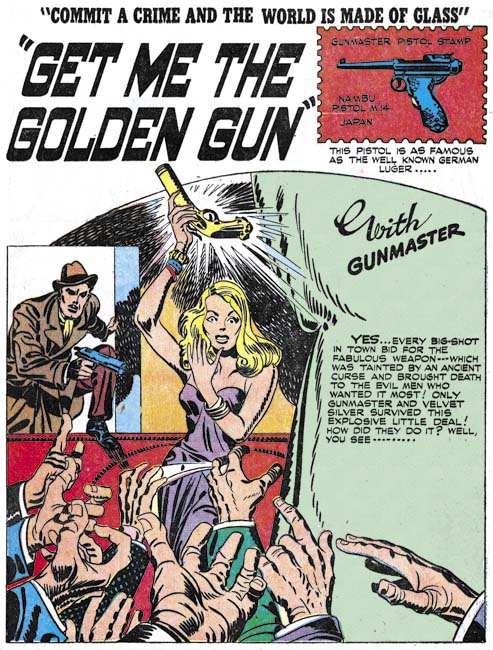
Real Clue Crime Stories volume 2 number 6 (August 1947) “Get Me the Golden Gun”, art by Jack Kirby
Packy never made a third appearance, but Velvet returned without Packy in “Get Me the Golden Gun”. It was the hero, Gunmaster, who now fell under her spell. While Packy had been a criminal himself, Gunmaster of course was not. So he found his attraction to Velvet to be very troublesome. While she was not quite so villainous as Velvet, Simon and Kirby developed a similar relationship between Riot O’Hara and Link Thorne in “The Flying Fool” (produced at the same time and for the same publisher Hillman).
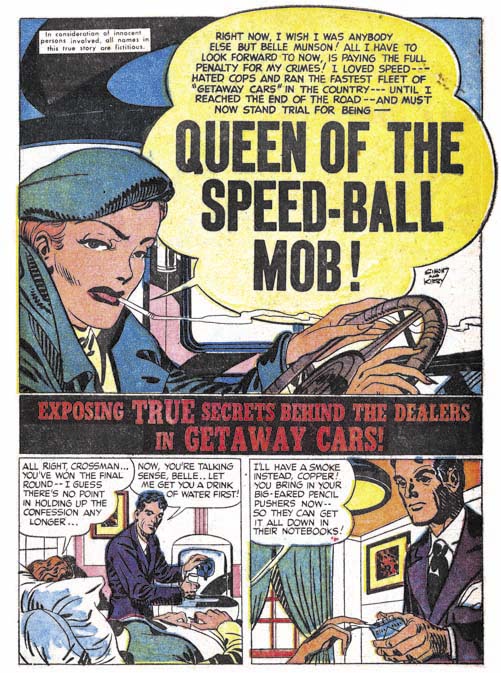
Justice Traps the Guilty #4 (May 1948) “Queen of the Speed-Ball Mob”, art by Jack Kirby
Gunmaster and Velvet were clearly meant to be fictional however the work Simon and Kirby produced for Prize were meant to be considered as true stories (or at least initially). So similar mismatched romance between a hero and a criminal were not repeated in Headline or Justice Traps the Guilty. Still women criminals played an important part of the Simon and Kirby repertoire for Prize. Often when the lead character was a female, Simon and Kirby would present the story as if it was told by the woman. Generally in such cases, the story would start with what I describe as a confessional splash. A splash were the main character introduces the story with their speech balloon forming the feature’s title. This device was common in Simon and Kirby romance publications but only seems to be used by Joe and Jack for the crime genre when the protagonist was a woman. Most likely this was because male criminals generally had a very bad ending while the woman repent and paid her debt to society. Apparently Simon and Kirby preferred not to kill or execute even villainous women but had no qualms about providing the male criminals with such fates. In all honesty this form of sexual discrimination is still very much prevalent today.
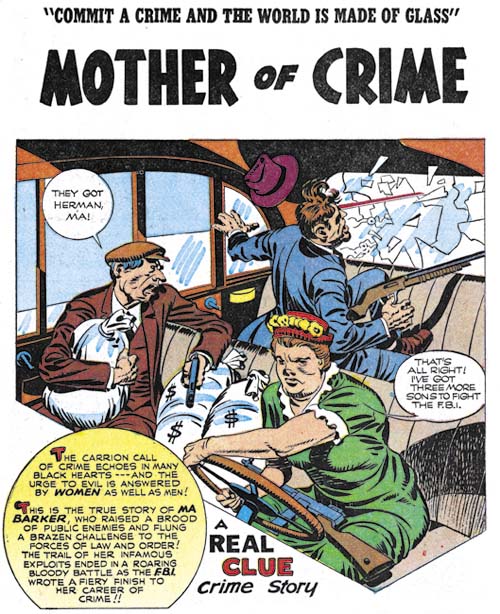
Real Clue Comics volume 2 number 4 (June 1947) “Mother Of Crime”, art by Jack Kirby
The Simon and Kirby rule was all female villains where young and beautiful and would in the end repent their life in crime. But of course every rule has exceptions. I doubt many would call Ma Barker either young or beautiful. Not only does she come to a bad end, she does not sound very repentful either. It is a marvelous story that fortunately was included in “The Best of Simon and Kirby”. If you have not bought the book yet, what are you waiting for?

Headline #25 (July 1947), pencils by Jack Kirby, inks by Joe Simon


